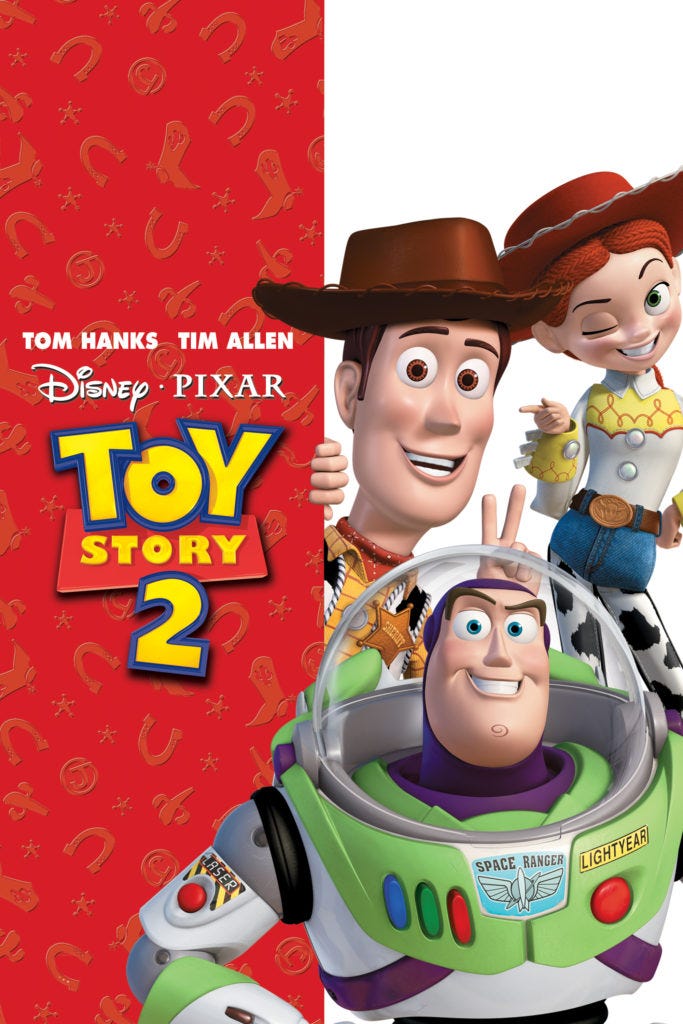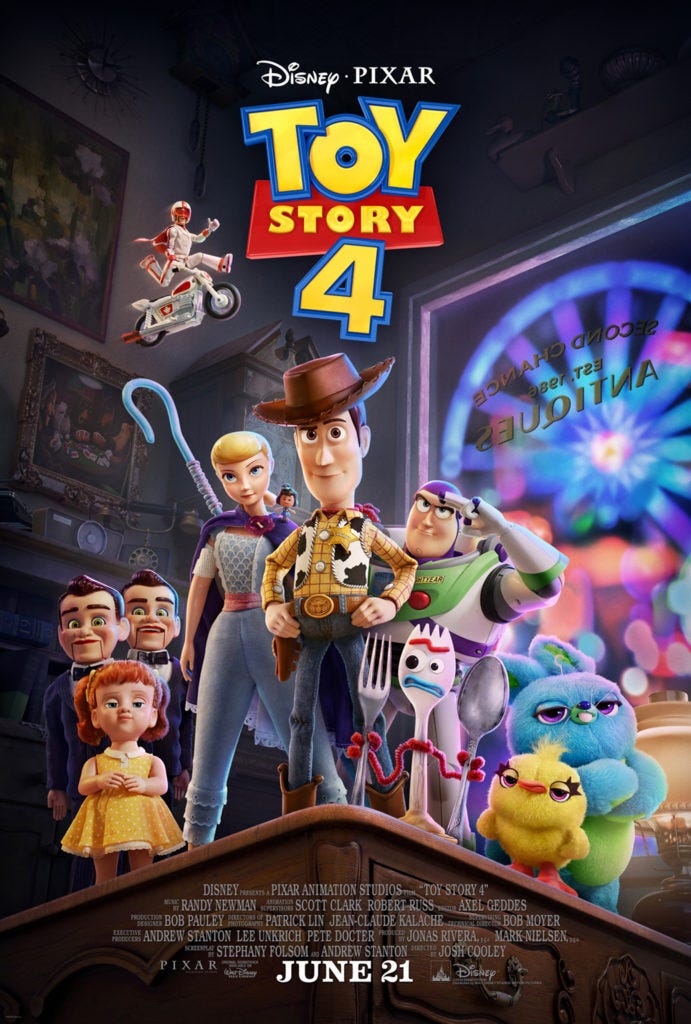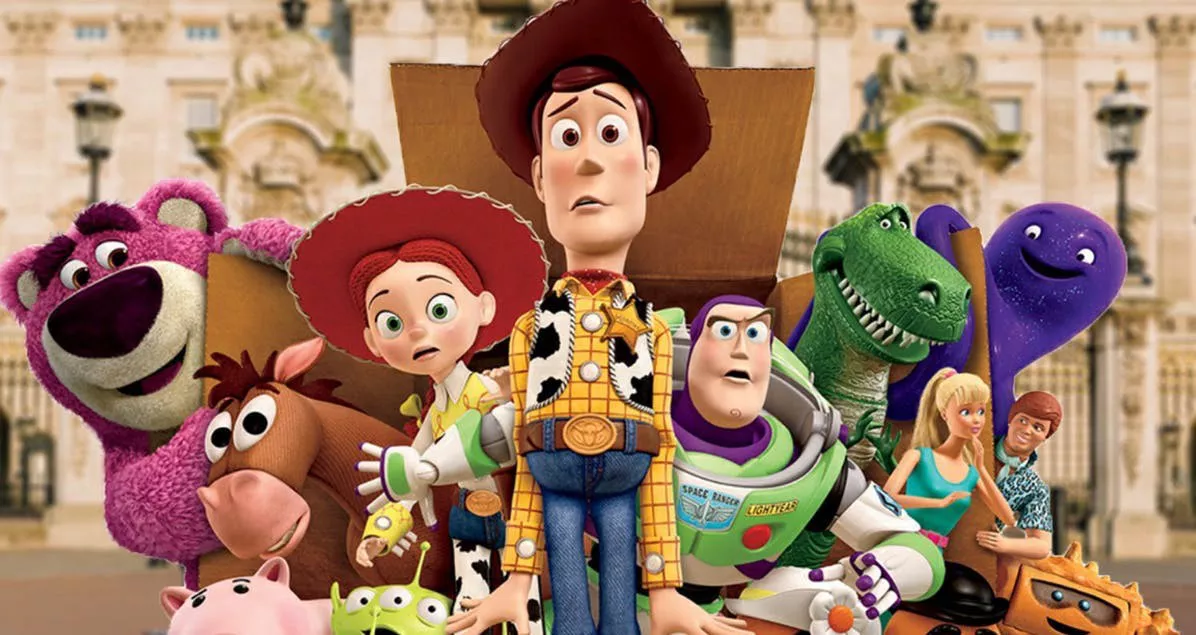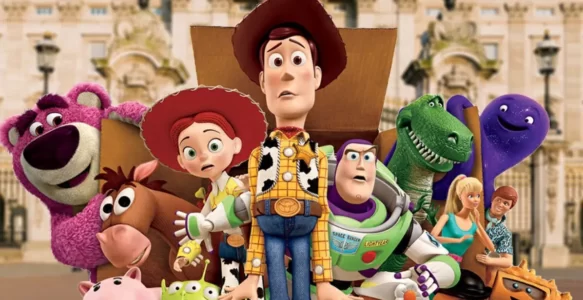I watched the Toy Story trilogy on New Year’s Eve. And of course it took me three months to actually sit down and write. I’ve got ink and procrastination in my veins. But, the more I thought about that chilly winter night waiting for the New Year to come, the bigger and stronger this idea about a piece of my childhood became.
As I went through the three films, I realised that Toy Story (as in “the whole series so far”), is a huge and beautiful metaphor for growing up.
I’ve always been a Disney fan since I can remember. I’ve been devouring those fascinating tales on repeat over and over again, as a child. And I guess in those years, through the eyes of Woody, I saw my own self. Finding new friends, dealing with loneliness and the fear of “replacement”, but mostly facing the fear of time and change.
And then, I grew up. Kind of – I’m still a big child inside. But time and change became part of my life, and so did Toy Story with all of its childhood memories. And it was only then, on that chilly winter night, that I realised how mature the existing trilogy really is.
Toy Story: The Beauty of Teamwork

We all remember Toy Story’s plot. Woody, Andy’s favourite toy, thinks he has everything under control until a “stranger comes to town:” Buzz Lightyear. The Space Ranger invades and challenges his world, forcing him to learn about teamwork and collaboration.
But Toy Story is mostly about Woody, rather than toys in general and their relationship with humans. It’s about someone who’s ultimately a child in adult clothes, someone who still has a lot to learn about empathy. When Woody realises Andy won’t be happy without both him and Buzz in his life, the film takes a deep turn for the better.
By the time Woody and Buzz get back in Andy’s car, Woody has had to earn back his old friends’ respect, teaming up with Buzz to move past his fear of being replaced. Much like how elder brothers feel when a little sister comes into their world, taking all of their parents’ attention away.
When opposites meet
Although, in truth, Toy Story is as much about Buzz Lightyear as it is about Woody. As the two rivals/friends move past obstacles and dangers together, Buzz too learns about his own self. The two characters are opposites, constantly clashing with each other yet meeting in the middle. Thanks to the cowboy, Buzz learns to see the world under a different light, realising true strength doesn’t belong to the way people see us; it comes from who we are, deep down in our hearts.
Ultimately, Buzz isn’t strong and brave because he is a Space Ranger; he is a Space Ranger because he is strong and brave. Buzz is exposed to change and unsettling realities just as much as Woody, thanks to whom he lets go of his fears to embrace a new personal identity. By sticking with each other, Woody and Buzz realise they are much more similar than they originally thought. And this experience will be enough to keep them united in the following films as well.
Toy Story 2: The Beauty of Moving On

When Toy Story 2 starts, a few years have passed since the events of the first film. Woody and Buzz are now mature characters living peacefully with other toys. Although Andy is still a kid, he is growing up fast, and a new threat shows up to unsettle Woody’s world: the fear of being left behind.
Several events cause the seed of doubt to grow within Woody’s mind. What if Andy becomes too old and forgets about him, or doesn’t want to play with him anymore?
As Woody meets up with Jessie, Bullseye and Stinky Pete, his doubts grow even stronger; to the point that Woody decides it’s much better to make children happier from a museum for the rest of his life, rather than to rot away in a stockroom. This time, it’s up to Buzz to bring him back to reason with his rescue mission. Andy is going to grow older, and there’s no way they can avoid that; but Woody can still make him happy, living in the present moment as Andy’s favourite toy. Woody’s fear is a thing of the
When she loved me
Jessie doesn’t trust kids anymore. After her former owner abandoned her, Jessie has developed resentment towards humans. Her fear of loneliness is the same as Woody’s; but her doubts are set to be cleared by her friendship with the cowboy.
By learning about Woody’s love for Andy (and viceversa), Jessie realises some children are still capable of showing love and affection toward their toys, and it’s still worth hanging around them to see them smile all day. Thanks to Woody and the whole gang, Jessie learns to let go of the past and move on; a concept we would soon be seeing in Toy Story 3 as well.
Toy Story 3: The Beauty of Growing Up

Again, several years have passed since the end of Toy Story 2. Andy is now a young adult ready to move to college, and we lost most of his toys along the way. The third film starts gloomier than ever, with toys barely surviving in Andy’s old box as he prepares to go to college, all clinging to old feelings of happiness connected to cheerful memories with their owner.
It’s not time to play with toys anymore, and Toy Story 3 makes it clear right from the start: just like the young audience who followed Woody for over a decade, Andy is a grown-up who’s about to start his own life. Woody and the others are not meant to be part of his world anymore; and they’ll have to learn it the hard way.
They’ll meet Lotso, an apparently adorable character with serious past traumas caused by abandonment. Lotso himself has several occasions to redeem during the story, but his trauma is too strong, far more than Jessie’s in Toy Story 2: he is not willing to change his mind on kids, and he believes all toys should think like him for their own sake. Even if this means hurting them to prove his point.
As Woody is still willing to come back to Andy, his friends start to realise it’s time to move on and forget their beloved owner once and for all. But, in truth, both Andy and Woody need to grow up: they need to let go of each other, acknowledge the happy memories they created together and find the strength to move on.
This will only happen at the very end of the
So long, partner
In a way, Woody and Andy almost remind me of a father-son relationship, with Woody being the son about to go off to a new life. They both cling onto each
Eventually, Woody finds the courage to move forward and leave Andy behind, starting a new life with his friends in Bonnie’s house. The cowboy has finally grown up too; mbut we know his shared memories with Andy will never leave him, possibly shaping the kind of man (or toy) he is going to be in Toy Story 4.
A new adventure?
For a long time now, I haven’t been sure what to expect from Toy Story 4 – and I still can’t know for sure if I look forward to Woody’s new adventure or not. Surely, this feels like the final chapter of the cowboy’s story, and I wonder what else he could learn about himself and his friends. But I trust Pixar on surprising us all with that.

I want to keep
So long, partner. See you on June 21.




